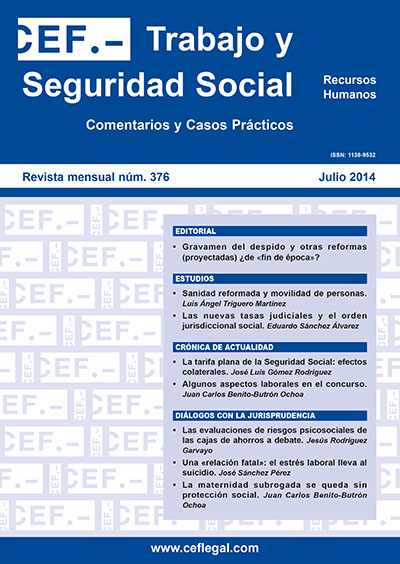Flat rate of Social Security: collateral effects
DOI:
https://doi.org/10.51302/rtss.2014.2986Keywords:
Social Security contributions, employment, economy, pension systemAbstract
The objective of this study is the analysis of the Royal Decree-Law 3/2014, of 28 February, on urgent measures to promote employment and permanent employment, in which the flat rate of Social Security was adopted, which is a significant reduction in employers' contributions for common contingencies when indefinite contracts are concluded.
The design of the law is not stringent with the requirements for permanent contracts, so that its effectiveness will be greatly reduced –deadweight–. Furthermore, it is unfair to companies that have made greater efforts in maintaining employment. It is also a regressive reduction of social contribution from the view of tax law and also arises in the context of an overall economic policy based on wage devaluation / social costs.
Similarly, the measure affects the labour market due to a broad scope of application, instead of encouraging the employment of workers with greater difficulties or less qualified, as it is advised by international organizations.
The incentive will be an important revenue deduction from Social Security contributions, given the alleged tax benefits that it proposes, it would have justified his compensation with the State Budget. Moreover, it will also have impact on the calculation of the downward adjustment of pensions, recently approved by Law 23/2013. Therefore, it should be part of a more general debate about funding of the pension system –now only focused on expenditures and not on incomes– and the Recommendations of the Toledo arrangement about the future of the pension system in Spain.


















